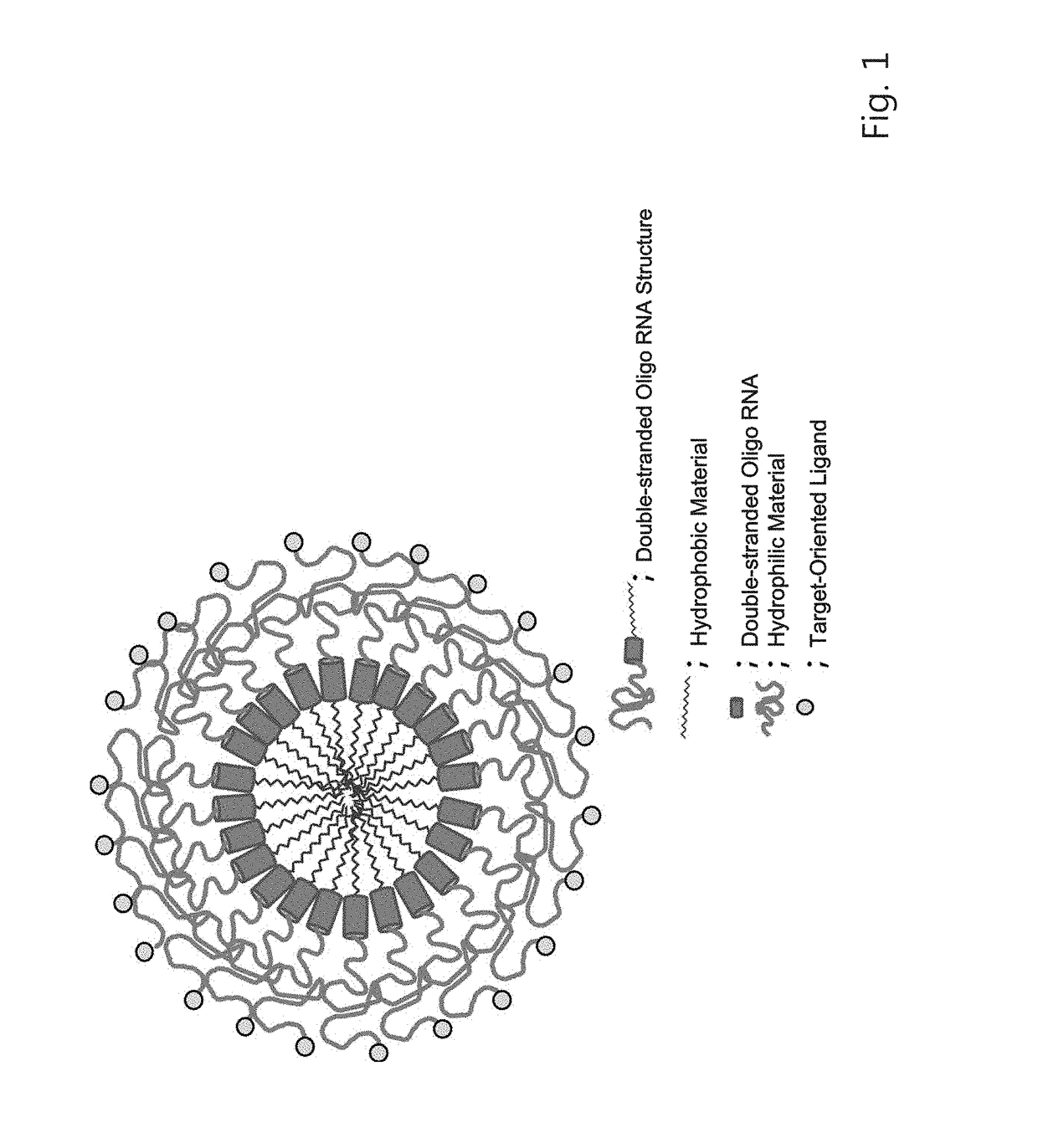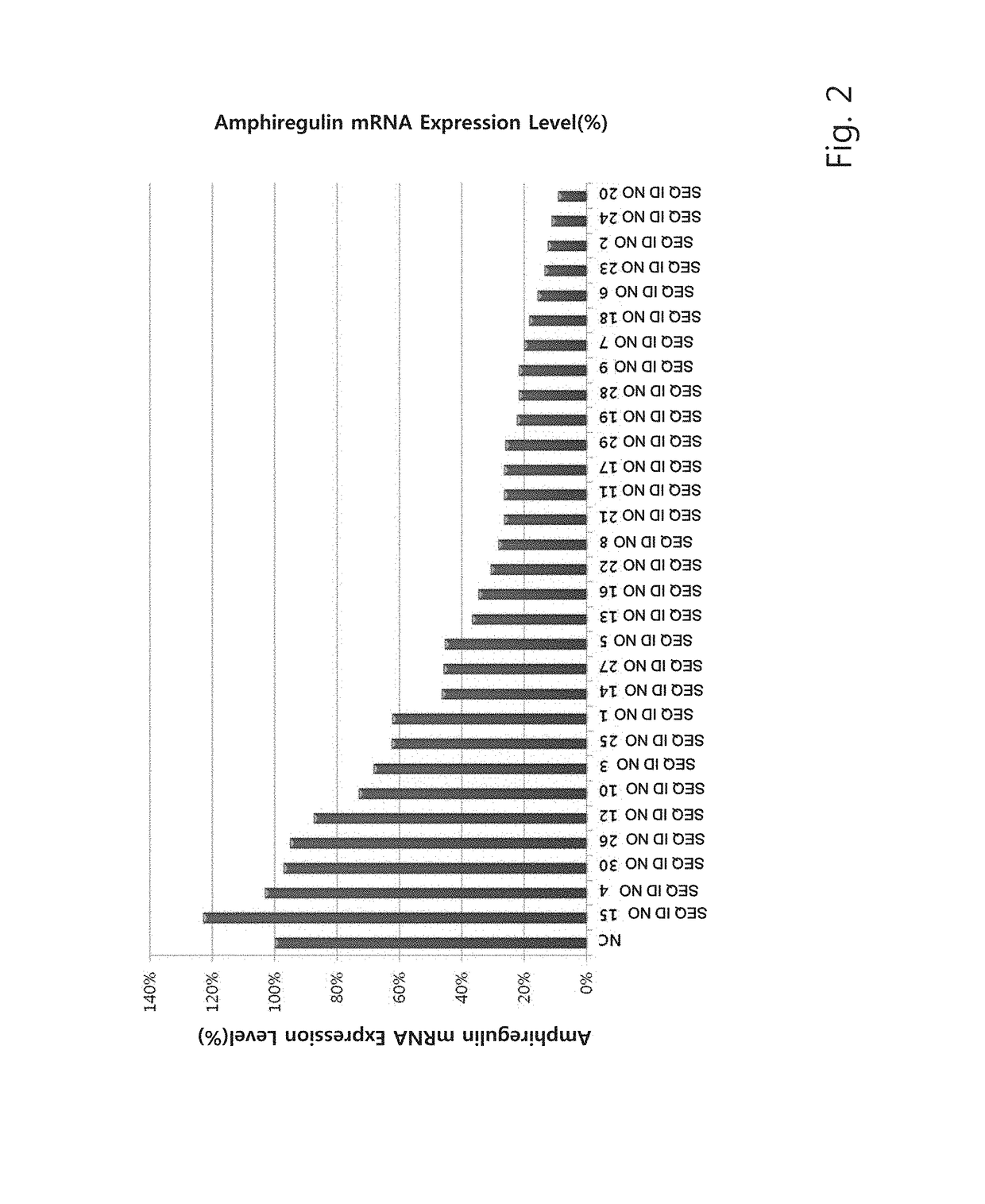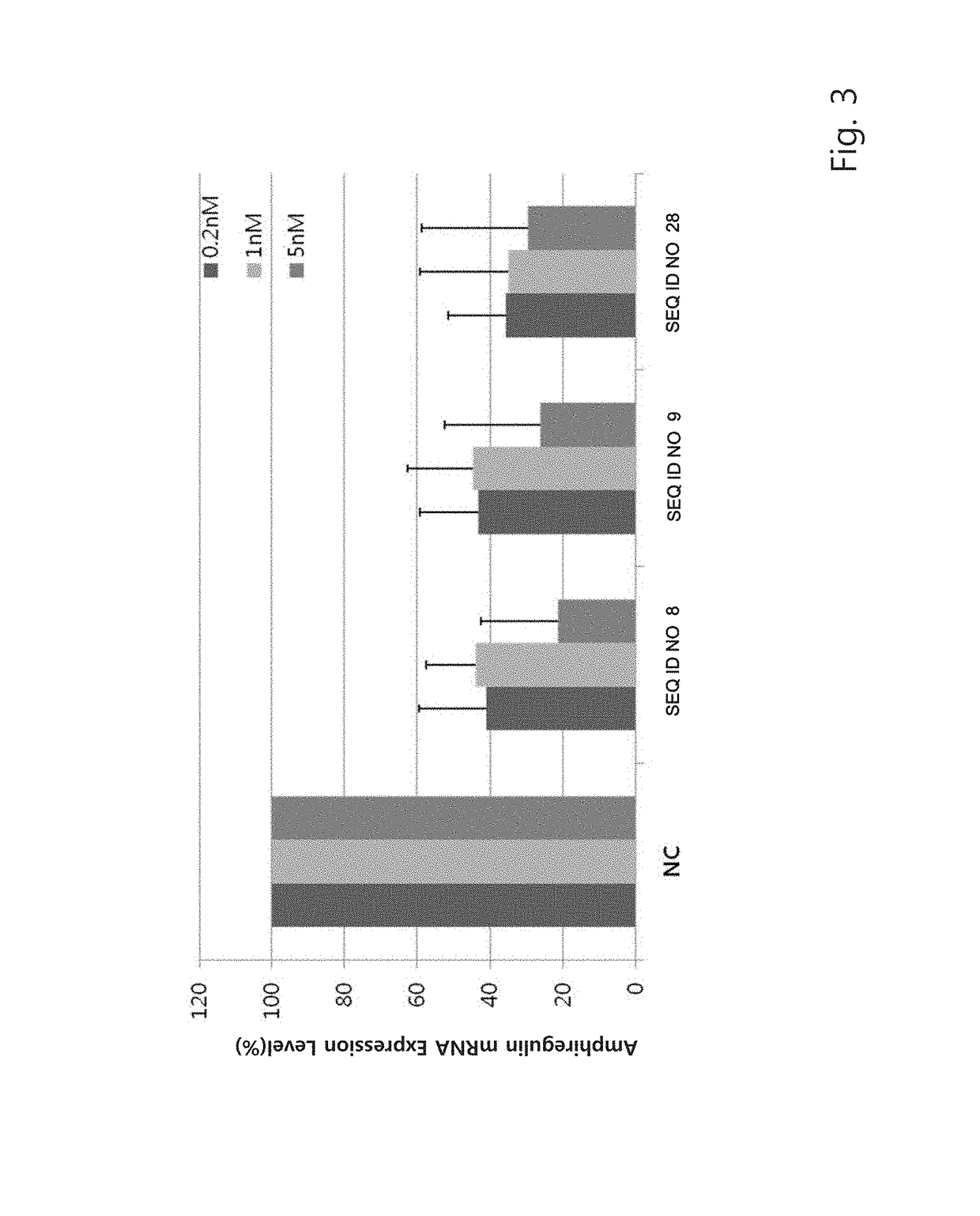Double-stranded oligo RNA targeted to amphiregulin and pharmaceutical composition comprising same for preventing or treating fibrosis or respiratory diseases
a technology of amphiregulin and oligo rna, which is applied in the direction of drug compositions, immunological disorders, cardiovascular disorders, etc., can solve the problems of bronchial obstruction, difficulty in delivering the sirna into the target organ, and low stability in vivo
- Summary
- Abstract
- Description
- Claims
- Application Information
AI Technical Summary
Benefits of technology
Problems solved by technology
Method used
Image
Examples
example 1
Design of Target Base Sequence and Preparation of siRNA
[0087]Target base sequences (sense strands) capable of binding to an mRNA sequence (NM_001657.2) of amphiregulin gene (Homo sapiens), an mRNA sequence (NM 006142.2) of stratifin gene (Homo sapiens), an mRNA sequence (NM 009704.2) of amphiregulin gene (Mus musculus), and an mRNA sequence (NM 018754.2) of stratifin gene (Mus musculus) were designed, and siRNAs of antisense strands having sequences complementary to the target base sequences were prepared.
[0088]First, a gene design program (Turbo si-Designer) developed by Bioneer Co., was used to design the target base sequences to which the siRNA may bind from mRNA sequences of the corresponding genes. The amphiregulin and stratifin-specific siRNAs according to the present invention have a double stranded structure including a sense strand consisting of 19 nucleotides and an antisense strand complementary thereto. Further, siCONT (CUUACGCUGAGUACUUCGA (SEQ ID NO: 331) as a sense str...
example 2
Preparation of Double-stranded Oligo RNA Structure (SAMiRNA LP)
[0089]A double-stranded oligo RNA structure (SAMiRNA LP) prepared in the present invention has a structure represented by the following Structural Formula 5.
[0090]
[0091]In Structural Formula 5, S is a sense strand of the siRNA; AS is an antisense strand of the siRNA; PEG, which is a hydrophilic material, is polyethylene glycol; C24, which is a hydrophobic material, is tetradocosane including a disulfide bond; and 5′ and 3′ mean directions of the double-stranded oligo RNA end.
[0092]In order to prepare the sense strand of the siRNA of Structural Formula 5, after a double-stranded oligo RNA-hydrophilic material structure of a sense strand of which polyethylene glycol was bound to a 3′-end was synthesized by a method of linking phosphodiester bonds forming an RNA backbone structure using β-cyanoethyl phosphoramidite as in the above-mentioned method, based on 3′ polyethylene glycol (PEG, Mn=2,000)-CPG prepared by a method in ...
example 3
Preparation of Nanoparticle (SAMiRNA) Made of Double-stranded Oligo RNA Structure (SAMiRNA LP) and Measurement of Size Thereof
[0095]The double-stranded oligo RNA structure (SAMiRNA LP) prepared by Example 2 formed a nanoparticle, that is, a micelle by a hydrophobic interaction between the hydrophobic materials bound to the end of the double-stranded oligo RNA (FIG. 1).
[0096]It was confirmed by analyzing polydispersity indexes (PDI) of the nanoparticles formed of SAMiRNALP-hAR, SAMiRNALP-hSFN, SAMiRNALP-mAR, SAMiRNALP-mSFN, and SAMiRNALP-CONT that the nanoparticle (SAMiRNA) formed of the corresponding SAMiRNA LP was formed.
[0097]3-1: Preparation of Nanoparticle
[0098]The SAMiRNALP-hAR was dissolved in 1.5 ml Dulbecco's phosphate buffered saline (DPBS) at a concentration of 50 μg / ml, the obtained mixture was freeze-dried at −75° C. and 5 mTorr condition for 48 hours to prepare nanoparticle powder, and the nanoparticle powder was dissolved in DPBS (solvent), thereby preparing homogenize...
PUM
| Property | Measurement | Unit |
|---|---|---|
| median survival time | aaaaa | aaaaa |
| pore size | aaaaa | aaaaa |
| temperature | aaaaa | aaaaa |
Abstract
Description
Claims
Application Information
 Login to View More
Login to View More - R&D
- Intellectual Property
- Life Sciences
- Materials
- Tech Scout
- Unparalleled Data Quality
- Higher Quality Content
- 60% Fewer Hallucinations
Browse by: Latest US Patents, China's latest patents, Technical Efficacy Thesaurus, Application Domain, Technology Topic, Popular Technical Reports.
© 2025 PatSnap. All rights reserved.Legal|Privacy policy|Modern Slavery Act Transparency Statement|Sitemap|About US| Contact US: help@patsnap.com



